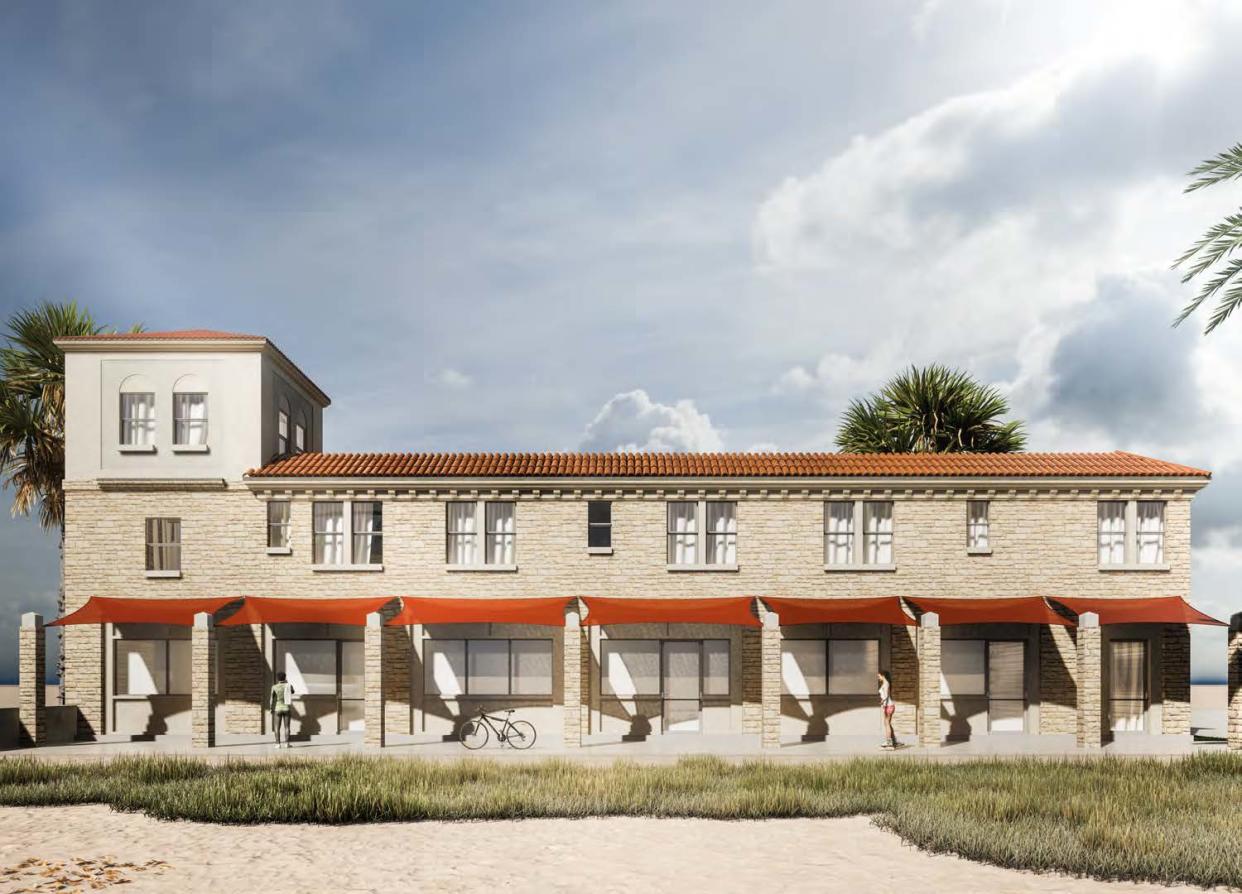The National Park Service awards $750k to the St. Augustine Beach Hotel

The National Park Service has awarded the St. Johns Cultural Arts Center $750,000 for the continued restoration of the St. Augustine Beach Hotel, 370 State Road A1A.
For the past two-plus decades, the council has maintained the building through an agreement with the City of St. Augustine Beach and grant funding. Today, the building hosts The Dance Company and the St. Augustine Beach Art Studio. A community space is also available.
The council’s executive director, Christina Parrish Stone, underscored the council’s role in raising over $2 million to save the building from demolition, along with efforts to restore and stabilize the existing structure.
“You can’t place a dollar amount on the historical value and significance of the St. Augustine Beach Hotel,” she said.
Dylan Rumrell, the mayor of the City of St Augustine Beach described the working relationship between the city and the council as an honor.
“We appreciate the organization’s achievements in obtaining grants to refurbish the historic hotel and former city hall building,” he said in a press release.
The history of the St. Augustine Beach Hotel:
The St. Augustine Beach Hotel, designed by architect Francis Hollingsworth, was constructed in 1939 by the Works Progress Administration (WPA) as part of the St. Augustine Auxiliary Pier Project with hopes to attract tourism. The wooden building with a coquina veneer opened on Labor Day, 1940 during the Great Depression.
The WPA also built a seawall and wooden boardwalk in the location of the present-day St. Johns County Ocean Pier. The hotel and pier served as a popular beach access point and was noted to play a key role in community’s economic growth.
Research show that the building’s coquina was quarried from Anastasia Island. The stone, limestone and sand-sized shell fragments were used to build several structures within the ancient city including the Castillo de San Marcos National Monument. Today, 31 coquina structures, some built before 1820, remain a part of St. Augustine’s Town Plan National Historic Landmark District.
The St. Augustine Beach Hotel eventually served as the City of St. Augustine Beach's City Hall until the council assumed responsibility for its preservation 25 years ago.
In 2022, the St. Augustine Beach Hotel was listed on the National Register of Historic Places for the role it played during the St. Augustine Civil Rights Movement.
The St. Augustine Civil Rights Movement Spotlight
In 1964, as America remained embedded in the Cold War while facing the onset of the Vietnam War, the Civil Rights Act languished by filibuster in the U.S. Senate. St. Augustine’s Lincolnville, a residential Black community sitting west of the railroad, became a hotbed for violence.
Local activists, led by Dr. Robert B. Hayling, requested, and received assistance from Rev. Martin Luther King Jr. and the Southern Leadership Christian Conference. King and his men descended upon St. Augustine and organized peaceful marches, sit-ins, and wade-ins, as the Klu Klux Klan, law enforcement officers and government officials retaliated.
The St. Augustine Beach Hotel was placed center stage as photographs of attacks on protestors wading in the waters of the white only beach on June 25, 1964, caught the attention of multiple news outlets. One picture even landed on the front page of the New York Times.
As St. Augustine’s drama unfolded center stage, the U.S. Senate, who could no longer feign its ignorance of the civil rights argument, ended its 83-day filibuster and signed the Civil Rights Act into law on July 2, 1964.
The National Park Service Grant
The National Park Service grant is part of $23.4 million grant program being used for 39 projects spanning 16 states and the District of Columbia. This grant is designed to preserve sites associated with the Civil Rights movement. In a statement issued by the National Park Service, the beachfront property was described as the sole remaining structure where wade-ins spearheaded by leaders of the Civil Right movement took place.
Parrish Stone added that raising awareness increases access to fund historic preservation sites that enhance the area’s artistic and cultural heritage.
“Historic sites and historic preservation are critically important to our community and to cultural tourism in St. Johns County,” she continued.
According to Parrish Stone, the council and the City of St. Augustine Beach are now in the planning phase for constructing classrooms and art studios on the building’s second floor.
This article originally appeared on St. Augustine Record: The National Park Service awards funds to the St. Augustine Beach Hotel

